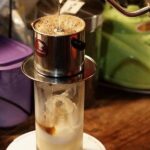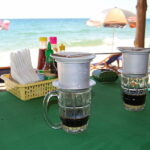Everyone has their go-to method for brewing the perfect cup of coffee. Brewing an incredibly delicious coffee is an art that has been around for ages and every region has its unique way of utilizing the ground coffee to prepare a satisfying warm drink. Similarly, a phin is a standard coffee brewing tool commonly used in Vietnam. Let’s dive into the mechanics of how to use a phin
Contents
How to Use a Phin to Make Vietnamese Coffee
As you would know, a phin is a Vietnamese word for the traditional coffee filter used for brewing Vietnamese coffee. It is a simple metal filter, which plays an integral part in imparting the distinctive taste of Vietnamese coffee. The best part is that it does not use filter paper, so there is no waste.
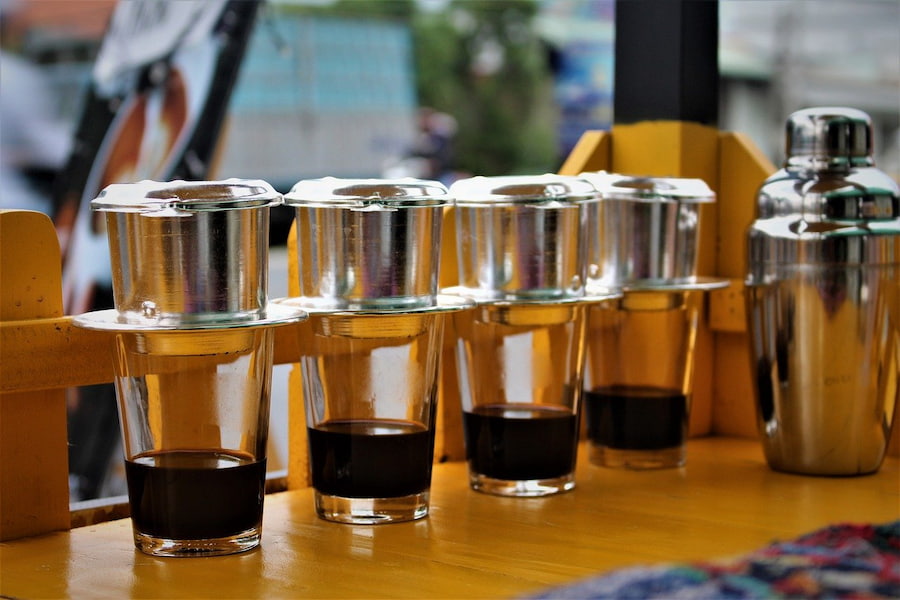
Following is a step-by-step guide on how to brew authentic Vietnamese coffee using a phin:
- Use Vietnamese coffee: Vietnamese coffee is slightly different in taste from other coffee as it usually has a much higher percentage of Robusta beans compared to coffees in other countries. You can use other types of ground coffee in a phin but just make sure that the grind size is coarse.
- Measure 1-2 tablespoons of coffee: When using a phin, it is important to use the right amount of coffee to ensure the correct thickness of the coffee bed for the perfect brew time. If the coffee grounds are too loosely packed, the coffee will brew too quickly and lose flavor. On the other hand, if the coffee grounds are packed tightly, the brew time will be too long and the coffee will get cold.
- Add the coffee grounds to the filter chamber: As I discussed above, you do not need to add filter paper to the chamber before adding the coffee. You can use a reusbale tea bag as a substitute for coffee filter. Just make sure that you do not use a fine grind as the coffee will pass through the perforation and end up in your cup. Once you have added the coffee, tap the chamber to settle the coffee so it is evenly distributed.
- Place the press filter inside the chamber: Make sure to spin the press filter a couple of times to even out the grinds. You do not need to push down the insert too hard to pack the coffee; the weight of the press filter is enough to do the job.
- Place the filter chamber on the cup: The best container for phin coffee is a clear, round, glass cup that will allow you to keep an eye on the brewing process.
- Pour 0.8 to 1 ounce of water into the chamber: The small quantity of water is used to wet the coffee grounds and allow them to bloom first. Wait around 20 to 30 seconds before moving on to the next step.
- Pour 4 to 5 ounces of hot water into the chamber: The water should be at a temperature of 195-200 degrees Fahrenheit. You can choose to slightly decrease or increase the quantity of water depending on how strong you like your coffee. Cover the chamber with the cap after you pour in the water to retain the heat.
- Wait for the coffee to brew: This step is all about waiting. It usually takes 4 to 5 minutes for all the water to pass through the coffee grounds and into the cup. However, if the coffee is brewing too fast or too slow, you may have to adjust the quantity of the coffee grounds for the next time.
Note: For an authentic Vietnamese coffee experience, add the sweetened condensed milk to the cup BEFORE you start the brewing process.
- Remove the filter from the cup: Once the coffee stops dripping from the filter, remove it from the cup. Take off the cap and put it upside down on the table. Then, place the entire filter assembly on the lid to catch any liquid that may still come out of the phin. You can add the extra coffee collected in the cap to your cup if you want.
- Stir the coffee: If you have already added the condensed milk to your cup, you can mix up everything and start enjoying your Vietnamese phin coffee. Alternatively, you can add in your dairy option and sugar (if you want) at this point before experiencing a delicious cup of coffee.
Parts of a Phin
The phin is primarily used for making a single cup of coffee. It has four different parts used to make a satisfying cup of fresh coffee:
- Cap: It is the topmost part of the tool that covers the filter so that no unwanted particles enter the coffee grounds during the brewing process. The lid is also helpful for retaining the heat within the filter cup while the coffee grounds bloom and the coffee drips into the cup.
- Filter chamber: Also called the filter cup or brewing chamber, it is the biggest part of the phin. The bottom of the chamber is perforated to allow the brew to pass through. Since the holes are small enough to prevent the coffee grounds from passing through, you do not need a paper filter with a phin. The chamber houses the press filter or the strainer.
- Press filter: It is a perforated insert placed inside the chamber. The primary purpose of the insert is to keep the coffee grounds compact at the bottom of the chamber before you begin adding the water. Without the press filter, the coffee grounds can move around the chamber and will not come in contact with water adequately during the brewing process. As a result, your coffee will lose its taste and strength.
- Perforated plate: It is the bottom-most part of the phin. The plate is placed on the cup with the filter chamber firmly positioned on it. Its main purpose is to balance the filter on the cup during the brewing process.
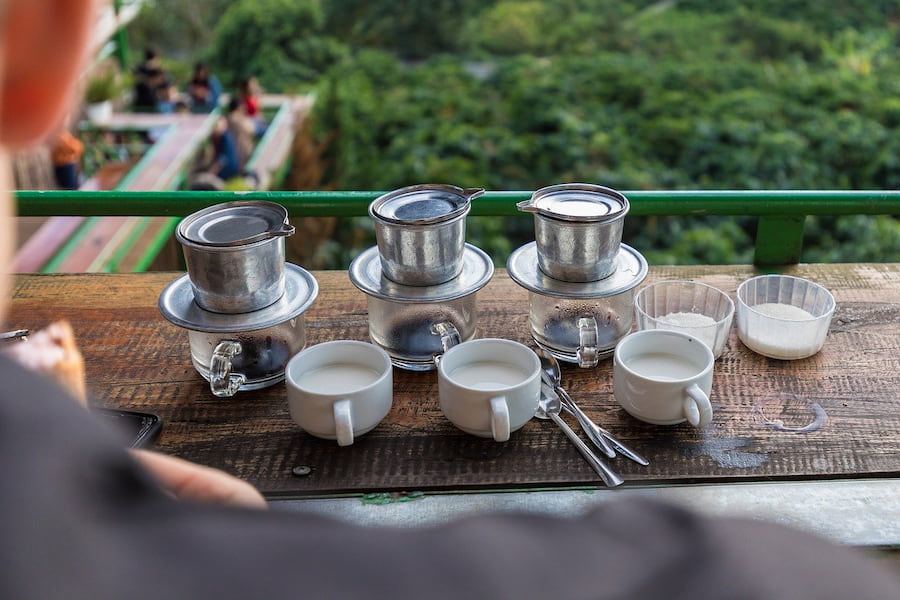
History of the Phin Coffee
Coffee is an integral part of Vietnamese culture. According to global data, Vietnam is the world’s top exporter of Robusta coffee beans, but that was not always the case.
French colonialists introduced the people of Vietnam to coffee, along with the phin, in the 1800s. Traditionally, sweetened condensed milk was added to the coffee made using the phin. The reason for choosing condensed milk as the dairy of choice for coffee was due to the inaccessibility of fresh cow’s milk in Vietnam. Moreover, the condensed milk lasted longer in the tropical climate and you did not need to refrigerate it.
Consequently, the combination of bitterness from the coffee and the sweetness from the condensed milk became the hallmark taste of the phin coffee, even after fresh milk was available. Today, the coffee culture of Vietnam revolves around the slow drip of the coffee from the phin into the cup. It forces you to wait, relax, unwind, and chat with your friends while you wait for the coffee to brew and has become almost like a ritual.
How to Resolve the Common Issues of Phin?
Using a phin filter is simple and easy. You simply place the contraption on your cup and allow the water to pass through the coarsely ground coffee beans and into your cup through the perforated bottom of the filter.
However, occasionally it can run into a few issues that I have listed below, along with how to resolve these problems:
- Coffee is taking too long to brew: If your coffee is not dripping from the filter or taking too long, your phin may be choked. The first reason can be the use of more than recommended amount of coffee that is causing your phin to be blocked and preventing the water from passing through the filter.
If you have used the correct amount, check the grind size of the coffee. When the particles are too fine, they can clog the holes in the filter. Wash out your filter and try again with a coarser coffee ground. Make sure to properly clean your coffee filter.
- Coffee got cold while brewing: If your coffee temperature is not according to your liking, then try heating up your cup before placing the filter on it. You can warm the cup by filling it up with boiling water and letting it sit for a minute. Throw away the boiling water from the cup and start the brewing process immediately.
- Coffee tastes diluted: If you are using the recommended amount of coffee grounds but your coffee is not strong enough, try reducing the amount of water you are using. You cannot increase the quantity of the coffee as it can choke the phin as I discussed above.
- Coffee has stopped dripping too soon: Occasionally, there may be water left in the filter chamber that is not dripping through, even though you have used the perfect amount of coffee with coarse ground. This can be due to a vacuum in the filter. Simply, remove the cap to break the seal and allow a little air to get into the filter. Replace the cap but leave a little gap or avoid pressing it down too tightly.
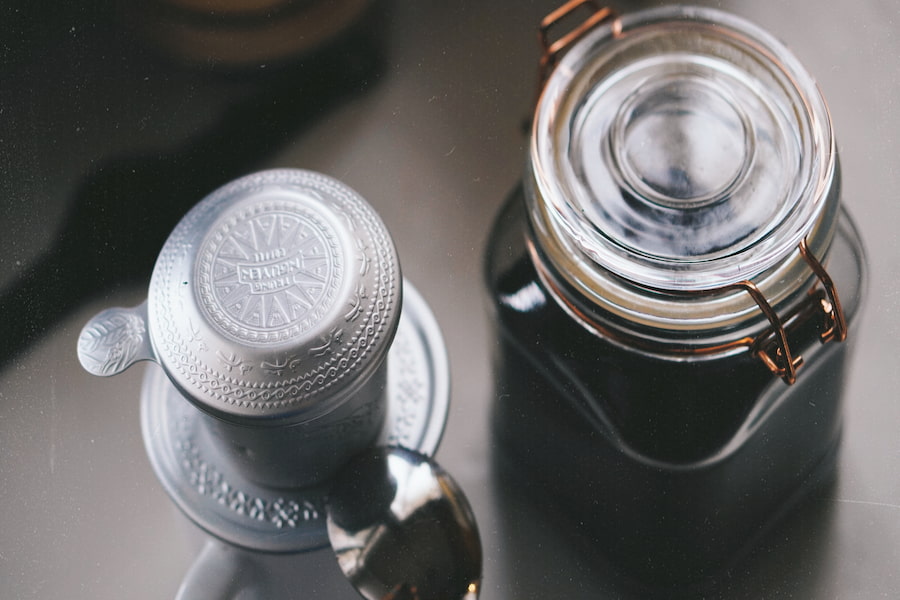
What Beans Are Used for Vietnamese Coffee?
Traditional Vietnamese coffee is made from Robusta beans, often with a medium-dark to dark roast. The roasting process is slow to give the beans a deep roast and create an intense flavor profile with an extra kick, as the Vietnamese people prefer it.
Since Robusta beans are bitter with very little sugar and fat content, the Vietnamese add butter and sugar during the roasting process. This practice incorporates a deeper flavor into the beans and imparts hints of dark chocolate, caramel, and hazelnuts in the brew.
Conclusion
Phin is a Vietnamese filter used to make traditional Vietnamese coffee. It consists of four parts; the cap, filter chamber, press filter, and perforated plate. The entire contraption is placed on a cup and water is passed through the coffee grounds held in place between the bottom of the filter chamber and the press filter. Within three to five minutes, you have a perfect brew with a distinctive flavor and aroma.

